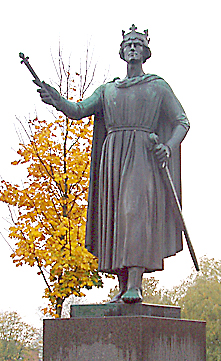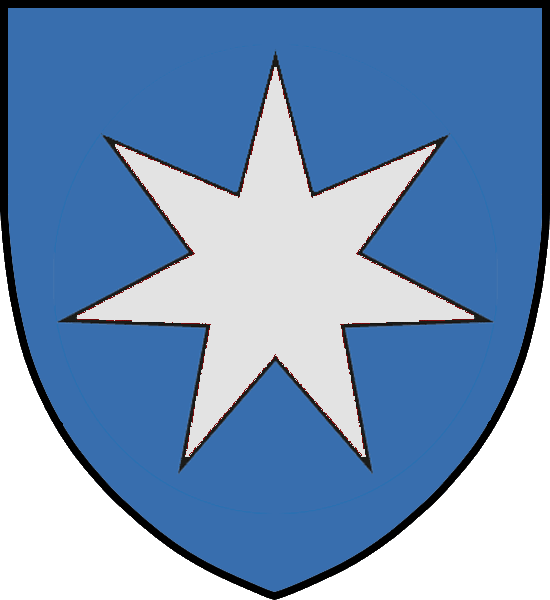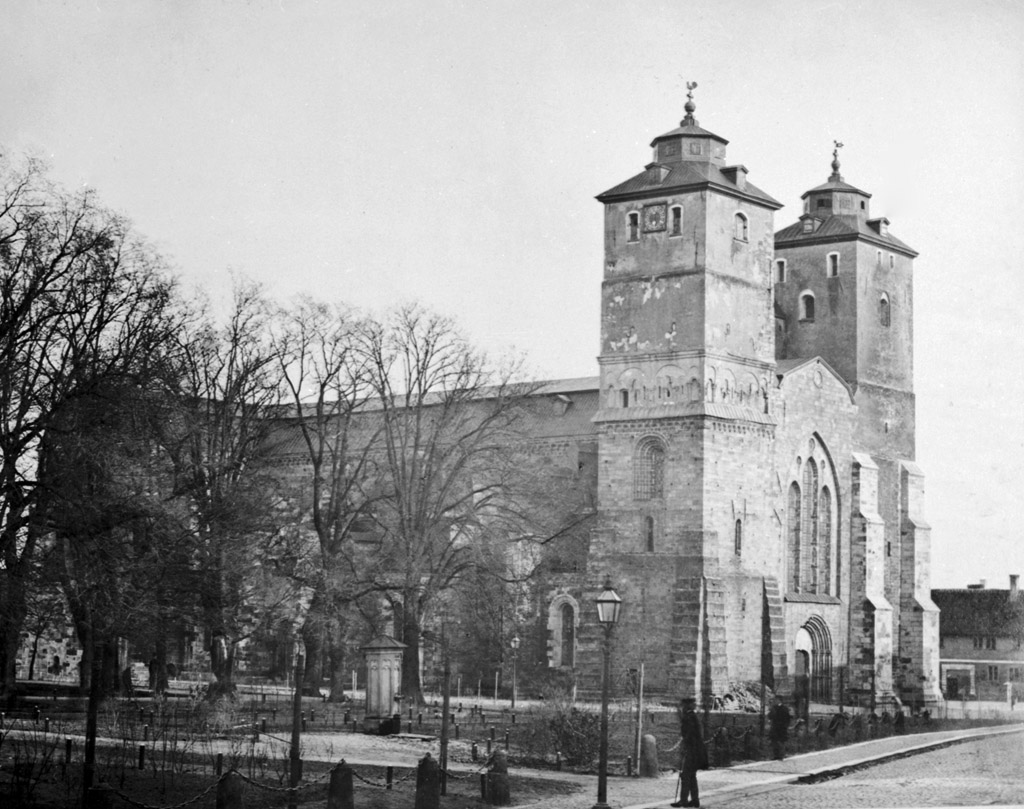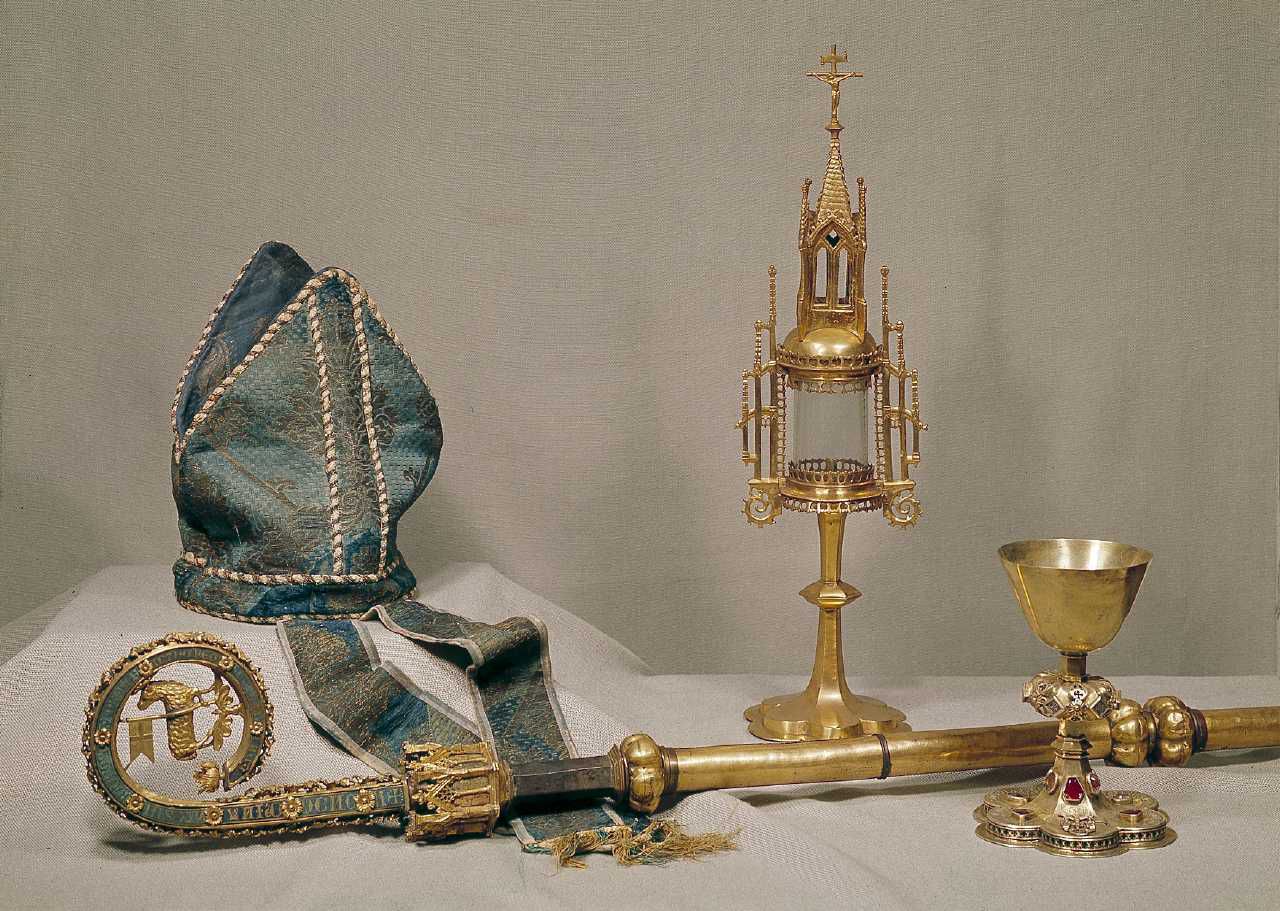|
Absalon
Absalon (21 March 1201) was a Danish statesman and prelate of the Catholic Church who served as the bishop of Roskilde from 1158 to 1192 and archbishop of Lund List of (arch)bishops of Lund. Until the Danish Reformation the centre of a great Latin (arch)bishopric, Lund has been in Sweden since the Treaty of Roskilde in 1658. The Diocese of Lund is now one of thirteen in the Church of Sweden. Cathol ... from 1178 until his death. He was the foremost politician and church father of Denmark in the second half of the 12th century, and was the closest advisor of King Valdemar I of Denmark. He was a key figure in the Danish policies of territorial expansion in the Baltic Sea, Europeanization in close relationship with the Holy See, and reform in the relation between the Church and the public. He combined the ideals of Gregorian Reform with loyal support of a strong monarchical power. Absalon was born into the powerful ''Hvide'' clan, and owned great land possessions. He endowe ... [...More Info...] [...Related Items...] OR: [Wikipedia] [Google] [Baidu] |
Asser Rig
Asser Rig – a.k.a. ''Asser Rig Skjalmsen Hvide'' – (c. 1078–1151) was a jarl and chieftain from Zealand, Denmark, a son of Skjalm Hvide (before 1045 – c. 1113) and ''Signe Asbjørnsdatter'' (c. 1050 – c. 1096). Asser's siblings were (children of Skjalm and Signe) ''Margrethe Skjalmsdatter Hvide (1073–1162); Cecilie Skjalmsdatter Hvide (c. 1084 – 1161); Toke Skjalmsen Hvide (1085–1145); Sune Skjalmsen Hvide (c. 1086 – c. 1140) ; and Ebbe Skjalmsen Hvide af Knardrup (c. 1090 – 1151).'' by Roskildes Historie, roskildehistorie.dk. Asser married (c. ... [...More Info...] [...Related Items...] OR: [Wikipedia] [Google] [Baidu] |
Valdemar I Of Denmark
Valdemar I (14 January 1131 – 12 May 1182), also known as Valdemar the Great ( da, Valdemar den Store), was King of Denmark from 1154 until his death in 1182. The reign of King Valdemar I saw the rise of Denmark, which reached its medieval zenith under his son King Valdemar II. Childhood Valdemar was the son of Canute Lavard, Duke of Schleswig, the chivalrous and popular eldest son of King Eric I of Denmark. Valdemar's father was murdered by King Magnus I of Sweden days before the birth of Valdemar; his mother, Ingeborg of Kiev, daughter of Grand Prince Mstislav I of Kiev and Christina Ingesdotter of Sweden, named him after her grandfather, Grand Prince Vladimir Monomakh of Kiev. Valdemar was raised at Ringsted in the court of Danish nobleman Asser Rig of Fjenneslev (c. 1080–1151). Asser was a member of the Hvide noble family and had been raised together with Valdemar's father Canute Lavard. Valdemar was raised together with Asser's sons, including Absalon (c. 1128–120 ... [...More Info...] [...Related Items...] OR: [Wikipedia] [Google] [Baidu] |
Esbern Snare
Esbern Snare, also known as Esbern the Resolute, (1127–1204) was a '' høvding'', or chieftain, royal chancellor and crusader. His family were members of the powerful Hvide clan. In 1192, during the Crusades and after the fall of Jerusalem, he led a small group of Danish soldiers to the Holy Land. Upon his return, he had the Church of Our Lady, Kalundborg built. Early life Born in 1127, Snare was the eldest son of Asser Rig (c. 1080–1151), also called Asser the rich, of the Hvide clan. Esbern's mother, Lady Inge, was the daughter of and Princess Cecilia Knutsdatter. He was the grandson of Skjalm Hvide and great-grandson of Canute IV of Denmark (c. 1042 – 10 July 1086), the first Danish king (1080–1086) to be canonized. His family lived in Fjenneslev, Zealand. His brother was Absalon (c. 1128–1201), who became a powerful warrior leader and main advisor to Danish kings, and also Bishop of Roskilde and later Archbishop of Lund. Valdemar was his foster brother. His ot ... [...More Info...] [...Related Items...] OR: [Wikipedia] [Google] [Baidu] |
Anders Sunesen
Anders Sunesen (also ''Andreas'', ''Suneson'', ''Sunesøn'', Latin: ''Andreas Sunonis'') (c. 1167 – 1228) was a Danish archbishop of Lund, Scania, from 21 March 1201, at the death of Absalon, to his own death in 1228. He is the author of the Latin translation of the Scanian Law and was throughout his life engaged in integrating a Christian worldview into the old legislature. He managed to introduce tithe (taxation benefiting the church) despite the resistance this measure had met from the population of Scania during Absalon's time, but his efforts to convince the priests of his day about the merits of celibacy was based mostly on his own example and relied on oratory rather than legal maneuvering. To educate the priests and to forward his ideas, especially about the integration between church and state, he wrote a didactic poem, '' Hexaëmon'', consisting of 8,040 verses of Latin hexameter. A nephew of Absalon and a member of the religious and political elite, Sunes ... [...More Info...] [...Related Items...] OR: [Wikipedia] [Google] [Baidu] |
Copenhagen
Copenhagen ( or .; da, København ) is the capital and most populous city of Denmark, with a proper population of around 815.000 in the last quarter of 2022; and some 1.370,000 in the urban area; and the wider Copenhagen metropolitan area has 2,057,142 people. Copenhagen is on the islands of Zealand and Amager, separated from Malmö, Sweden, by the Øresund strait. The Øresund Bridge connects the two cities by rail and road. Originally a Viking fishing village established in the 10th century in the vicinity of what is now Gammel Strand, Copenhagen became the capital of Denmark in the early 15th century. Beginning in the 17th century, it consolidated its position as a regional centre of power with its institutions, defences, and armed forces. During the Renaissance the city served as the de facto capital of the Kalmar Union, being the seat of monarchy, governing the majority of the present day Nordic region in a personal union with Sweden and Norway ruled by the Danis ... [...More Info...] [...Related Items...] OR: [Wikipedia] [Google] [Baidu] |
Hvide
Hvide (English: ''Whites'') was a medieval Danish clan, and afterwards in early modern era a Danish noble surname of presumably one surviving branch of leaders of that clan. Before the 16th century it was not used as a surname. It signified the color white. Medieval Hvide clan The Hvide were influential in the Danish island of Zealand, and occasionally in other close parts of the country, such as other Danish islands and Skåne. They had a stronghold in Jørlunde. A folktale of the clan name contrasts this clan against the "black" clan of Viking leaders of Skåne (that then belonged to Denmark but now belongs to Sweden) ("Svarte Skåning") who had Thor as their chief god. The white islander clan were "protectees" of non-black god Odin. The Hvide leaders seem to have been among first to convert to Christianity, and later, the clansmen regularly rose to highest positions of Danish church, including several Roman Catholic archbishops of Lund. Several leaders of the clan a ... [...More Info...] [...Related Items...] OR: [Wikipedia] [Google] [Baidu] |
Archbishop Of Lund
List of (arch)bishops of Lund. Until the Danish Reformation the centre of a great Latin (arch)bishopric, Lund has been in Sweden since the Treaty of Roskilde in 1658. The Diocese of Lund is now one of thirteen in the Church of Sweden. Catholic Episcopate ''(all Roman Rite; some dates disputed according to the source) ;''Suffragan Bishops of Lund'' * Henrik (1060–1065? or 1048? – death 1060.08.21) * Egino (1065? – death 1072.10.19); ?former bishop of Dalby * Ricwald (1072?1075 – death 1089.05.26) * Ascer (1089–1103 ''see below'') ;''Metropolitan Archbishops of Lund'' * Ascer (''see above'' 1103 – death 1137.05.05) * Eskil (1138?1137–1177?1179) * Absalon Hvide (1177?1179 – death 1201.03.21) * Andreas Sunesen (1201–1222?1223) * Peder Saxesen (1224.01.11 – death 1228.07.11) * Uffe Thrugotsen (1228?1230 – death 1252.12.15) * Jakob Erlandsen (1253.08.13 – death 1274.02.18) * Trugot Torstensen (1276?1277.01.13 – death 1280.05.02) * Jens Dros (12 ... [...More Info...] [...Related Items...] OR: [Wikipedia] [Google] [Baidu] |
Archbishop Of Lund
List of (arch)bishops of Lund. Until the Danish Reformation the centre of a great Latin (arch)bishopric, Lund has been in Sweden since the Treaty of Roskilde in 1658. The Diocese of Lund is now one of thirteen in the Church of Sweden. Catholic Episcopate ''(all Roman Rite; some dates disputed according to the source) ;''Suffragan Bishops of Lund'' * Henrik (1060–1065? or 1048? – death 1060.08.21) * Egino (1065? – death 1072.10.19); ?former bishop of Dalby * Ricwald (1072?1075 – death 1089.05.26) * Ascer (1089–1103 ''see below'') ;''Metropolitan Archbishops of Lund'' * Ascer (''see above'' 1103 – death 1137.05.05) * Eskil (1138?1137–1177?1179) * Absalon Hvide (1177?1179 – death 1201.03.21) * Andreas Sunesen (1201–1222?1223) * Peder Saxesen (1224.01.11 – death 1228.07.11) * Uffe Thrugotsen (1228?1230 – death 1252.12.15) * Jakob Erlandsen (1253.08.13 – death 1274.02.18) * Trugot Torstensen (1276?1277.01.13 – death 1280.05.02) * Jens Dros (12 ... [...More Info...] [...Related Items...] OR: [Wikipedia] [Google] [Baidu] |
Sorø
Sorø () is a town in Sorø municipality in Region Sjælland on the island of Zealand (''Sjælland'') in east Denmark. The population is 7,999 (2022).BY3: Population 1. January by rural and urban areas, area and population density The Mobile Statbank from Statistics Denmark The municipal council and the regional council are located in Sorø. Sorø was founded in 1161 by , later the founder of |
Sorø Abbey
Sorø Abbey was the preeminent and wealthiest monastic house in all of Denmark during the Middle Ages. It was located in the town of Sorø in central Zealand. After Denmark became Lutheran in 1536, the abbey was confiscated by the Crown. The abbey was turned into the Sorø Academy in 1623, an educational institution that has served as a knight academy, a venue for higher learning during the Danish Golden Age. It survives to date as a boarding school. History The Sorø Abbey was founded by the brothers '' Ebbe Skjalmsen Hvide'' and ''Asser Rig (Hvide)'', who were sons of Skjalm Hvide. They were Zealand's most powerful nobles when in 1140 they founded and in 1142 consecrated the abbey. Dansk Biografiske Lexicon. Near Sorø, Ebbe also erected the Bjernede Church, and Asser established a Benedictine House, just a few years prior to his death in 1151. Asser then lived as a monk for the last years of his life. It was common practice for wealthy and powerful individuals and f ... [...More Info...] [...Related Items...] OR: [Wikipedia] [Google] [Baidu] |
Bishop Of Roskilde
The former Diocese of Roskilde () was a diocese within the Roman-Catholic Church which was established in Denmark some time before 1022. The diocese was dissolved with the Reformation of Denmark and replaced by the Protestant Diocese of Zealand in 1537. History The episcopal see of the Bishop was Roskilde Cathedral but from 1167, when Bishop Absalon completed a new bishop's palace known as Absalon's Castle on the small island of Slotsholmen, he resided at the small town of ''Havn'', which later became the present Danish capital Copenhagen. The diocese originally included both the island of Zealand and Scania (southern Sweden, then part of Denmark), but Scania was disjoined in 1060 and initially divided into the short-lived Diocese of Dalby and the Diocese of Lund, which absorbed the first and became the Metropolitan of (southern) Scandinavia. Successor jurisdictions In 1868, the Roman Catholic Diocese of Copenhagen was established with St. Ansgar's Cathedral as the seat. I ... [...More Info...] [...Related Items...] OR: [Wikipedia] [Google] [Baidu] |
Bishop Of Roskilde
The former Diocese of Roskilde () was a diocese within the Roman-Catholic Church which was established in Denmark some time before 1022. The diocese was dissolved with the Reformation of Denmark and replaced by the Protestant Diocese of Zealand in 1537. History The episcopal see of the Bishop was Roskilde Cathedral but from 1167, when Bishop Absalon completed a new bishop's palace known as Absalon's Castle on the small island of Slotsholmen, he resided at the small town of ''Havn'', which later became the present Danish capital Copenhagen. The diocese originally included both the island of Zealand and Scania (southern Sweden, then part of Denmark), but Scania was disjoined in 1060 and initially divided into the short-lived Diocese of Dalby and the Diocese of Lund, which absorbed the first and became the Metropolitan of (southern) Scandinavia. Successor jurisdictions In 1868, the Roman Catholic Diocese of Copenhagen was established with St. Ansgar's Cathedral as the seat. I ... [...More Info...] [...Related Items...] OR: [Wikipedia] [Google] [Baidu] |







